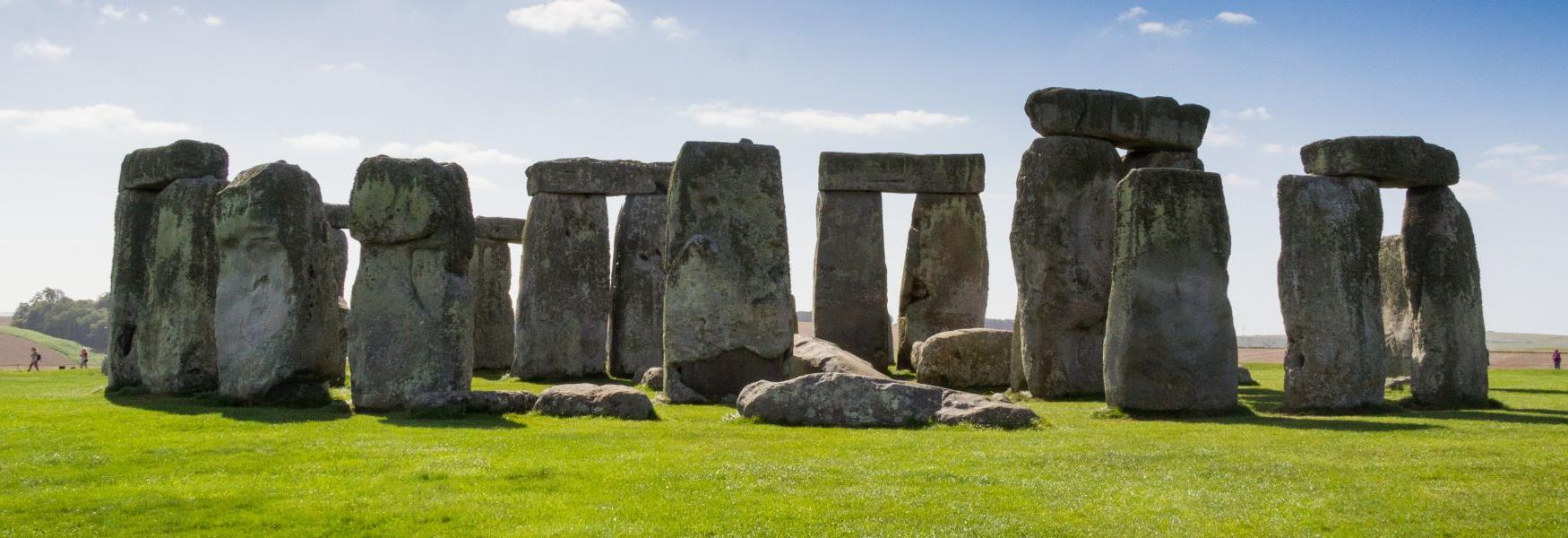To build your own Itinerary, click  to add an item to your Itinerary basket.
to add an item to your Itinerary basket.
Already saved an Itinerary?



You are here: UK History > Prehistoric Britain > Early humans in the stone age
The earliest humans were known as hominoids and periodically visited Britain during warmer parts of the year between Ice Ages. During this time, Britain wasn’t an island as it is now but was a peninsula of Europe. The River Thames at this time ran into the North Sea.
The oldest human remains so far found in England date to around 500,000 years ago, but archaeologists have discovered tools that are over 900,000 years old, suggesting that there were humans around, but may not have permanently inhabited Britain at the time.
The oldest human remains have been found to belong to a man around 6ft tall, he is believed to be a homo heidelbergenisis, an early species of human. Other species, like Neanderthals were also known to visit Britain around 300,000 years ago, before it became inhabited.
Historians think continuous human occupation of Britain began around the time that the last Ice Age ended. At this time, the people of Britain were hunter/gatherers, who would have eaten plants and any small mammals they could find. Although most of these people were known to be nomadic, there have been discoveries of structures, which suggested that some did settle into certain areas.
Britain became an island around 6,500 BC, which is likely when people began to settle in one place.
Farming first began in Britain around the year 4000 BC and is thought to have been introduced by visitors travelling from Europe. People relied heavily on wild food, but there is evidence that they farmed wheat, barley and similar produce. There is also evidence that humans began to form territories, which they would then travel around and usually included a communal monument or natural landmark. Some of these sites can still be found today, like the English Heritage managed sites of Windmill Hill or West Kennet Long Barrow, both in what is now Wiltshire.
Stone circles and hill forts also began to appear at this time, with Avebury and Stonehenge being the best surviving evidence of this.
(2300-800 BC)
The first weapons and jewellery began being created around 2300, along with types of pottery. People were often buried with these objects, in individual graves, which were then covered with round barrows. Initially, this metal was copper, but this soon became bronze, hence the name of this era. Bronze was created by combining copper and tin.
During this period, people were buried in graves within round barrows alongside imported goods from the European mainland, with several such sites being discovered around places like Stonehenge but also in Yorkshire and other places in Northern England.
Often these would be grouped in barrow cemeteries, which shows a shift in belief systems and society from the Neolithic era.
Towards the end of the Bronze Age, people began to build permanent settlements, which were grouped together to form villages and these would then be accompanied by hill forts, to enabled the villagers to ensure the security of their land and goods.
(800 BC – 50AD)
In this period, we see people building bigger and more elaborate defensive forts, like those remaining in Shropshire and Dorset, as well as moving on to iron as a way to create weapons and tools. Evidence of fine metalwork and more military style tools suggest that an aristocracy and policing began to emerge in this time period.
Towards the end of this time, the first coins began to come into circulation, as well as the first written records, which came with the arrival of the Romans expanding their empire.
Julius Caeser was one such chronicler, who made notes when his army raided Britain. The records mention that chariots were in use and religious leaders, known as Druids, were found in communities. Nearly 100 years would pass between Caeser’s early raids and the invasion, which was led by the Emperor Claudius.
© Visit Heritage 2025. All Rights Reserved

.png)


